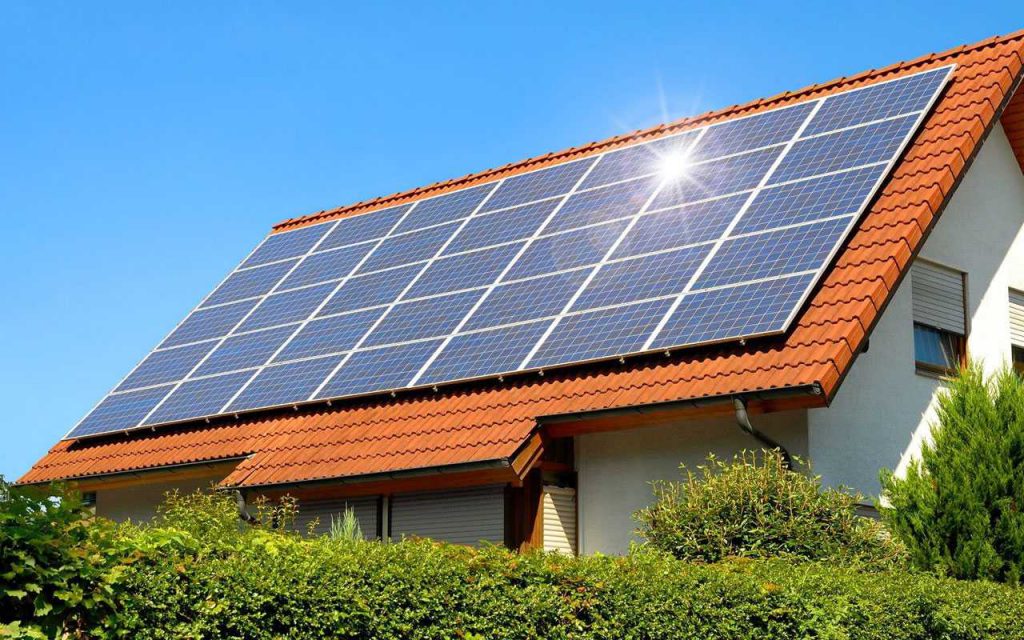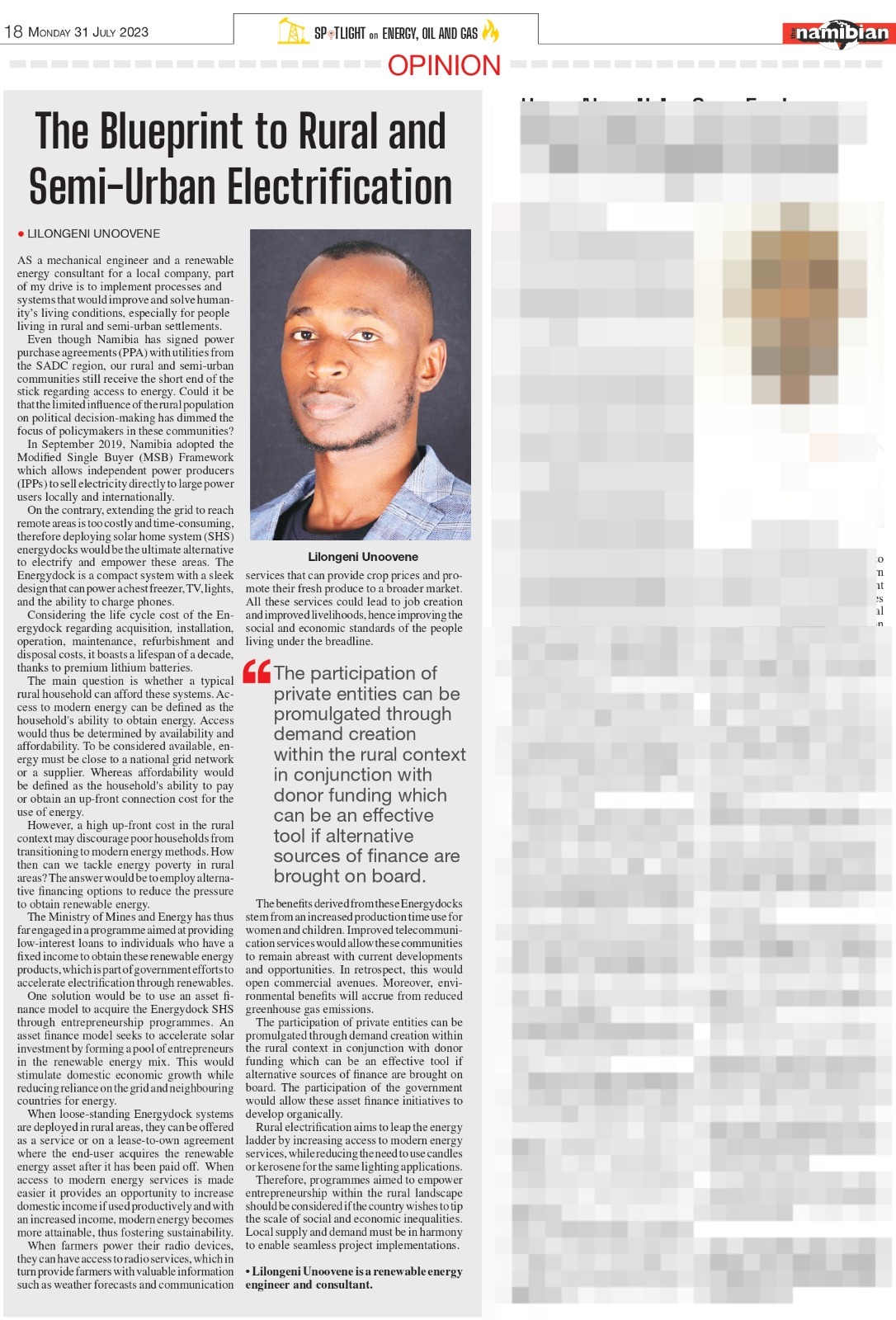In a world where access to electricity is often taken for granted, millions of people in rural and semi-urban areas still lack this basic necessity. In a compelling article penned by Lilongeni Unoovene, a mechanical engineer and renewable energy consultant, he sheds light on the challenges faced by these communities and offers a blueprint for electrification that could change lives for the better.

Unoovene’s article delves into the heart of the issue: despite Namibia’s commitment to power purchase agreements and the adoption of frameworks like the Modified Single Buyer (MSB), rural and semi-urban communities continue to be left behind in the energy revolution. The cost and complexity of extending the national grid to these remote areas present significant obstacles, leaving many without access to modern energy services.
“The participation of private entities can be promulgated through demand creation within the rural context in conjunction with donor funding which can be an effective tool if alternative sources of finance are brought on board.”
However, Unoovene proposes a revolutionary alternative: the deployment of solar home system (SHS) energy docks. These compact systems offer a sleek design and can power essential appliances like chest freezers, TVs, lights, and even charge phones. With a lifespan of a decade and premium lithium batteries, these energy docks provide a sustainable solution for rural electrification.
But affordability remains a key concern. Unoovene highlights the importance of alternative financing options to make renewable energy accessible to all. Programs such as low-interest loans from the Ministry of Mines and Energy and asset finance models through entrepreneurship programs offer promising avenues to reduce upfront costs and accelerate solar investment.
The benefits of electrification extend far beyond just powering devices. Access to modern energy services opens up a world of opportunities for rural communities. From improved healthcare and education to economic empowerment and environmental sustainability, the ripple effects are profound.
Unoovene’s vision is clear: by empowering entrepreneurship and fostering collaboration between government, private entities, and donors, rural electrification can become a catalyst for social and economic development. It’s not just about lighting up homes; it’s about lighting up futures and breaking the cycle of poverty.
As Unoovene concludes, rural electrification is not just a matter of convenience; it’s a matter of social justice. By tipping the scales of social and economic inequalities, we can create a brighter, more sustainable future for all Namibians.
Written with passion and expertise, Unoovene’s article serves as a rallying cry for action, inspiring readers to join the movement towards rural electrification and empowerment. It’s time to turn the blueprint into reality and bring light to those who need it most.
References
Unoovene, L. (2023, May 2). Namibia’s Potential for Sustainability. The Namibian. https://www.namibian.com.na/namibias-potential-for-sustainability/


i love your work